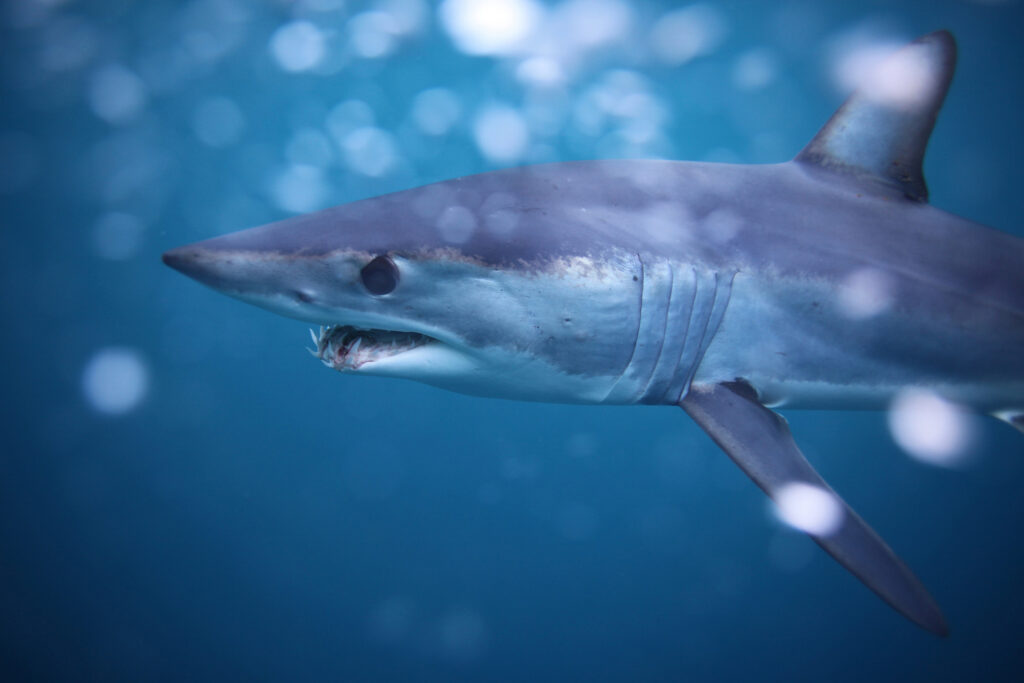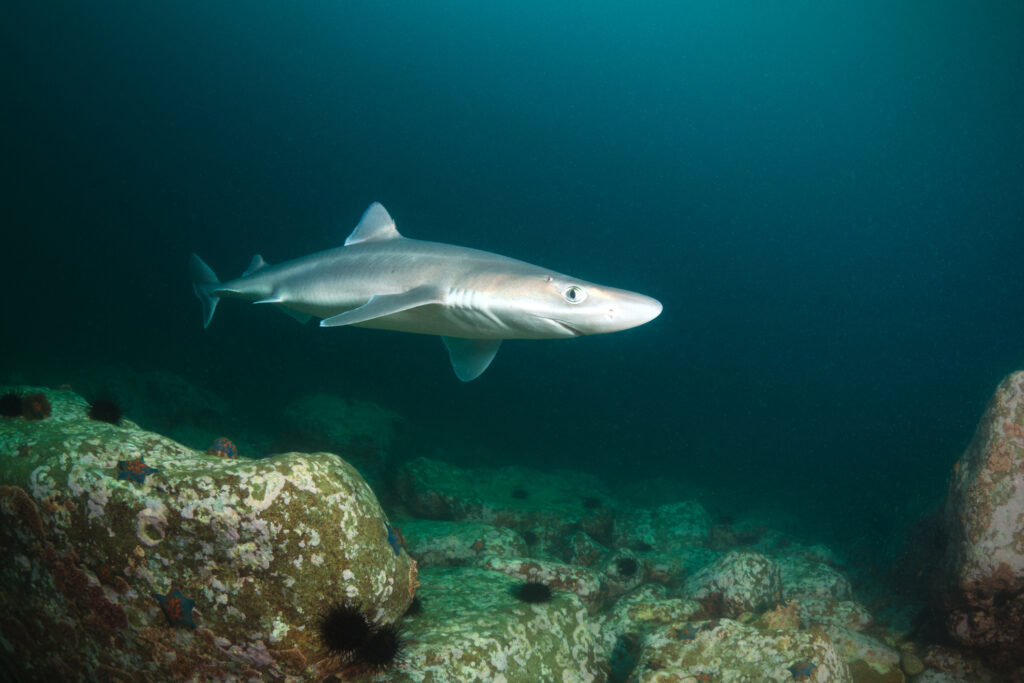Even though sharks are one of the most famous animals on Earth, thanks to being featured in pop culture, there might still be some things you don’t know about them, including some common misconceptions.
Many wrongly assume that all sharks are dangerous to humans and that they’re aggressive towards other marine creatures, for example, but this isn’t actually true – many are totally harmless to humans!
Something you also might not know is that some shark species are residents of the nearby Scottish waters. Let’s take a look at some of the wonderful species you can find right on our doorstep, from their appearances to their typical swimming spots.
Are there sharks in Scotland?
The Scottish waters are, in fact, home to not just one, but five different species of shark. While not all can be seen on the coastline, and they might only visit for a few months at a time, there are some exciting species you can spot all year round. We’re here to help you find out where these sharks are spotted most often, and the identifying features that’ll help you pick them out!
Types of sharks in Scotland
Basking shark
Basking sharks (Cetorhinus maximus) are the second-largest fish in the world and can grow up to 10ft long! Despite their large size, they usually only eat plankton by filtering through the water with their mouths wide open.
Summertime is when you’re most likely to see this species just off the Scottish shoreline since the temperatures are warmer. Typically, their hotspots are in the Isle of Skye and the Isle of Mull in the Scottish Hebrides. Throughout the rest of the year, they spend most of their time swimming in open waters.
Porbeagle shark
More compact and bulky-looking than you might expect from a shark, porbeagle sharks (Lamna nasus) can be found several miles offshore because they prefer the deeper water there. Their foods of choice are mackerel and herring, although they have been known to feed on bottom-dwelling fish too. Thanks to their love of mackerel, they are often referred to as ‘mackerel shark’.
The porbeagle shark is closely related to the great white shark (Carcharodon carcharias) as both are from the Lamnidae family. So, while we don’t usually see great whites on UK shores, you can still see a similar species.
Shortfin mako shark

Although they’re not local residents, shortfin mako sharks (Isurus oxyrinchus) do make seasonal appearances in our waters and have been sighted all around the British Isles. Like porbeagle sharks, they’re unlikely to attack humans unless provoked.
Despite the shortness of their pectoral fins, shortfin mako sharks are one of the fastest shark species in the world. Unlike long-fin mako sharks, they can survive in much colder waters and can raise their body temperature higher than that of the water.
Shortfin mako sharks are nomadic animals, which is why they can be found in so many parts of the world. Like most sharks, they’re apex predators and have no natural predators once they reach maturity.
Tope shark
Tope sharks (Galeorhinus galeus) are most commonly found on the southern and western coasts of the British Isles, but they have a wide distribution all around the UK, so it’s not surprising to find them in Scottish waters. They can be identified by their small, slim bodies and elongated snouts.
They are a migratory species, and individuals tagged in the UK have been found as far north as Iceland and as far south as the Canary Islands!
Dogfish shark
Unlike the blue and grey hues you would normally associate with sharks, dogfish sharks (Squalidae) have tan bodies with light brown hues and dark-brown spots. They’re a small species and usually only grow up to 3ft in length.
There are several types of dogfish found in UK waters, but the most popular by far is the lesser-spotted dogfish shark. They’re so common that fishermen often see them as nuisances, because they can get caught in fishing nets or take bait meant for much larger fish.
Dogfish sharks can be difficult to spot because they prefer sandy ground and tend to live and feed close to the seabed. However, they do enjoy the shallow waters and are rarely known to venture to deeper waters, so you’re more likely to spot them from the shore than on a boat trip.

Are sharks a protected species?
Some species of shark found off the Scottish coastline are classified as protected for different reasons.
Basking sharks are a fully protected species in Scotland because they tend to swim near the surface, which means that boats can accidentally hit them and cause harm. Although they’re no longer commercially fished – thanks to legal protection since 1998 – being caught as bycatch in fishing nets is still a threat. This proximity to the surface also makes basking sharks relatively easy to spot because they move along at a leisurely pace.
Due to their relatively small size, porbeagle sharks are also at risk because they can be fished for sport in some parts of the world. The IUCN (International Union for the Conservation of Nature) classifies them as vulnerable. Although their status varies in different areas of the world, it’s hoped that this classification will lead to them being protected by law in the near future.
Like many other species of shark around the world, the tope is threatened by overfishing due to the demand for its fins, flesh, and oil. In a bid to conserve the species, Greenpeace International added tope sharks to its seafood red list – a scientifically compiled list of species that it believes should not be commercially available.
4 ways to protect sharks in Scotland’s waters
With some of the Scottish resident sharks being under threat, how can we help protect them? Here are some ideas:
- Donate to charities: Raising money for shark conservation charities can help the experts understand the threats these species face and work towards a solution. Whether you set up a fundraising activity or a recurring donation, support for these charities is always appreciated. At Deep Sea World, we regularly support the Shark Trust, who work globally to help shark conservation.
- Stop overfishing: Many of the shark species around the Scottish coastline are under threat from overfishing, so advocating for their protection is an important part of their conservation.
- Stay educated: From watching documentaries to reading conservation research, keeping up to date with the status of local shark species and the conservation efforts in the area can help you get ideas for small ways to help.
- Reduce water consumption: Taking shorter showers, turning off the tap when brushing your teeth and collecting rainwater can all help with not only shark conservation, but also maintain the habitats of other marine creatures for the future.
Book your tickets to wander through our Underwater Tunnel exhibit, home to the largest collection of sharks in Scotland, including the sand tiger shark, or take on our shark diving experiences for adults and kids.
